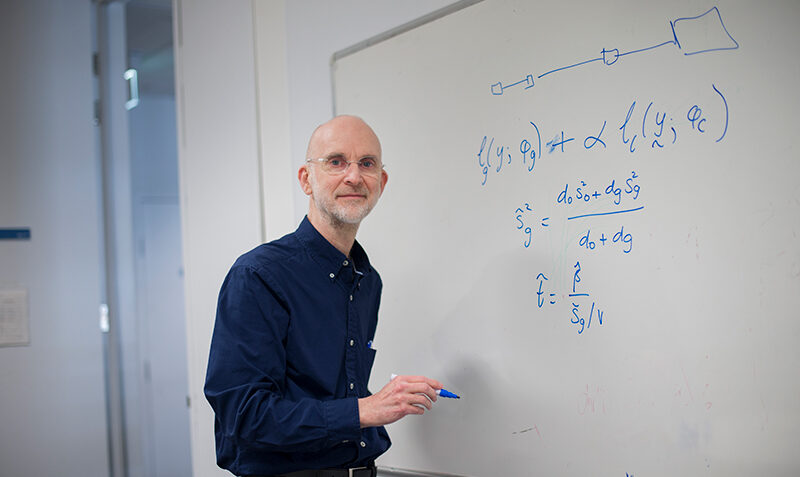What Does Bioinformatics Tutor Do?
What Does Bioinformatics Tutor Do?
Blog Article
The 25-Second Trick For Bioinformatics Tutor
Table of ContentsThe smart Trick of Bioinformatics Tutor That Nobody is Talking AboutExamine This Report about Bioinformatics TutorBioinformatics Tutor Things To Know Before You Get ThisBioinformatics Tutor Can Be Fun For EveryoneA Biased View of Bioinformatics Tutor
Of the total individuals included in the training, 80% were trainees from public college organizations, while the continuing to be 20% originated from exclusive institutions. To get approved for a certification of involvement, students were called for to attend at the very least 90% of the total training hours. As an outcome of this demand, a remarkable 95% of the participants successfully obtained their certificates, having not only satisfied the minimum attendance criteria but likewise finished all appointed tasks throughout the training.
During the height of the COVID-19 pandemic, particularly in between June and August 2020, the job team was charged with organizing specialized training in bioinformatics. This training was especially intended at students from the research study team Nucleus for Study in Applied Computer at the Federal College of Pará (UFRA) The adjustment to remote learning platforms because of the pandemic produced a chance to discover new mentor techniques and electronic tools that improved both reach and effectiveness.
To reply to the growing demand in the computing and life scientific researches areas, a sophisticated training course was introduced in 2020 labelled Intro to Machine Learning. This course was created to supply an obtainable yet extensive introduction of Expert system strategies, especially as used in bioinformatics. The program was performed over three months, from October to December 2020, and was supplied entirely online via the Google Meet platform. This online layout made it possible for participation from pupils across Brazil, much of whom may not have had the opportunity to attend in-person sessions.
6 Simple Techniques For Bioinformatics Tutor
A notable feature of this course was its emphasis on hands-on discovering. Around 50% of the complete training hours were dedicated to practical activities where pupils built smart models and applications in a series of scientific domains, including genetics, molecular biology, and ecological data analysis. Commonly made use of structures and devices such as Spyder, Google Colab, Jupyter Notebooks, and Orange were integrated right into the coursework. These systems allowed pupils to take part in real-time data manipulation, model training, and algorithm testing.
Sixty of them were connected with various greater education organizations in the state of Pará, while the staying twenty came from organizations found in five other Brazilian states. By presenting Artificial Knowledge in a appropriate and functional context, the initiative served to connect the void between concept and real-world application, providing students with a solid structure for future research or work in the field.
The training campaign created part of a broader academic outreach initiative called the Bioinformatics when traveling project. This task has, for many years, presented loads of students to the world of bioinformatics and computational biology. The occasions held under this umbrella campaign have occurred across several areas and years, as summarized in Table 1 (List of occasions, areas, years, and overall numbers of pupils and teachers)
Several of these teams, at first brought with each other by their engagement in training events, have considering that gone on to produce independent clinical research study in partnership with local academic establishments. The training not just fostered clinical reasoning within the context of bioinformatics yet also stimulated joint connections that extended past the training environment.
Bioinformatics Tutor - The Facts
The task itself was conceived and organized by MB and RR, who oversaw the preparation and execution of each step. Lectures were provided by have a peek at this website a multidisciplinary team including megabytes, FA, EF, KP, JS, DM, SN, LP, LG, AC, rr, and ih. The same group, omitting IH and RR, likewise served as tutors for the useful training modules. Financing for the job was given through the grant 88887.200562/ 2018-00 from CAPES. The authors prolong their thankfulness to everyone who added to the realization of this job, whether straight or indirectly, considering that its beginning.
The Federal College of Pará's Office of Study (PROPESP/UFPA) additionally offered financial assistance, specifically for the manufacturing of the final manuscript. The authors declare no business or financial disputes of interest that could have influenced the research. Additionally, click over here all viewpoints and analyses revealed in this write-up are only those of the writers and do not necessarily mirror those of their corresponding organizations, the author, editors, or reviewers associated with the magazine process.

Not known Details About Bioinformatics Tutor
From a pedagogical viewpoint, the mentor strategy made use of in the training was purposefully interactive. Courses were conducted in a way that encouraged student engagement and conversation, going past rote memorization to check out exactly how ideas are developed, applied in daily life, and tested in academic setups. The training ideology concentrated on nurturing both solid and struggling students, providing individualized support, and building confidence through continual mentorship and perseverance.

Each team, containing around 36 individuals, was supported by 3 mentors-- a lot of whom were postdoctoral researchers with specific experience. These mentors not only assisted design the team tasks however also facilitated their execution, ensuring that each research concern was both appropriately tough and pertinent. The goal was to supply a naturally reasonable context that participants can explore with open-ended purposes and accessibility to curated datasets.
For additional insights into the approach and end results of this project-based learning strategy, visitors are routed to S1 Text, that includes thorough summaries of the pedagogical structure, evaluation methods, and task motifs utilized in the training sessions.
Bioinformatics Tutor for Beginners
Of the total amount individuals involved in the training, 80% were pupils from public higher education and learning establishments, while the staying 20% came from private establishments. To certify for a certification of participation, pupils were required to attend at the very least 90% of the overall training hours. Significantly, past the trainees that signed up in the training sessions, seven experienced trainers took part in delivering the programs, while 3 committed research teachers coordinated the total training process. Roughly 50% of the total training hours were committed to useful tasks where trainees constructed intelligent designs and applications in an array of scientific domains, consisting of genes, molecular biology, and environmental information analysis. The training not only cultivated clinical reasoning within the context of bioinformatics however additionally triggered collective partnerships that extended past the training environment.
Report this page